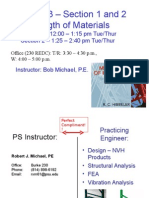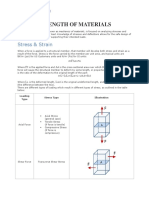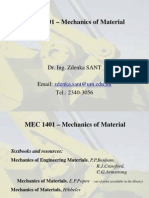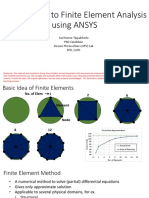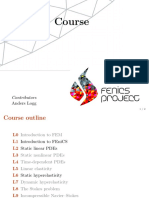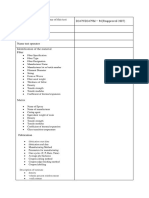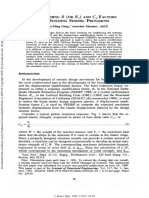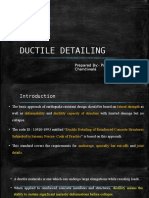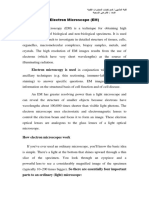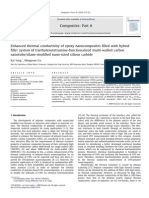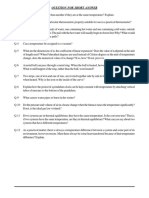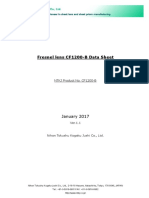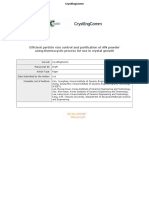0% found this document useful (0 votes)
108 views8 pagesGeilo Winter School 2012 Lecture 6: Static Hyperelasticity in Fenics
This lecture covers static hyperelasticity problems in FEniCS. It introduces the governing equations of static hyperelasticity, including the first Piola-Kirchoff stress tensor P and variational formulation. It describes stress-strain relations for hyperelastic materials using a strain energy density function W. Finally, it provides an example of using FEniCS tools like FacetFunctions to define boundaries and solving nonlinear variational problems.
Uploaded by
AMIRCopyright
© © All Rights Reserved
We take content rights seriously. If you suspect this is your content, claim it here.
Available Formats
Download as PDF, TXT or read online on Scribd
0% found this document useful (0 votes)
108 views8 pagesGeilo Winter School 2012 Lecture 6: Static Hyperelasticity in Fenics
This lecture covers static hyperelasticity problems in FEniCS. It introduces the governing equations of static hyperelasticity, including the first Piola-Kirchoff stress tensor P and variational formulation. It describes stress-strain relations for hyperelastic materials using a strain energy density function W. Finally, it provides an example of using FEniCS tools like FacetFunctions to define boundaries and solving nonlinear variational problems.
Uploaded by
AMIRCopyright
© © All Rights Reserved
We take content rights seriously. If you suspect this is your content, claim it here.
Available Formats
Download as PDF, TXT or read online on Scribd
/ 8






